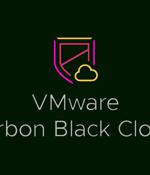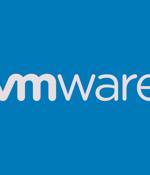Security News

CISA has added a critical severity vulnerability in VMware's Cloud Foundation to its catalog of security flaws exploited in the wild. The flaw was found in the XStream open-source library used by vulnerable VMware products and has been assigned an almost maximum severity score of 9.8/10 by VMware.

VMware has released a critical security upgrade to address a critical injection vulnerability that impacts several versions of Carbon Black App Control for Windows. Carbon Black App Control is a suite designed to help large organizations ensure that its critical endpoints run only trusted and approved software.

VMware has fixed a critical vulnerability in Carbon Black App Control, its enterprise solution for preventing untrusted software from executing on critical systems and endpoints. Even though the flaw has been privately reported to VMware, and there is no mention of it being actively exploited, admins are urged to upgrade to a fixed version as soon as possible.

VMware on Tuesday released patches to address a critical security vulnerability affecting its Carbon Black App Control product. Tracked as CVE-2023-20858, the shortcoming carries a CVSS score of 9.1 out of a maximum of 10 and impacts App Control versions 8.7.x, 8.8.x, and 8.9.x. The virtualization services provider describes the issue as an injection vulnerability.

VMware has released a vSphere ESXi update that addresses a known issue causing some Windows Server 2022 virtual machines to no longer boot after installing this month's KB5022842 update. Microsoft first acknowledged the issue on Thursday when the company said it only impacts VMs with Secure Boot enabled and running on vSphere ESXi 6.7 U2/U3 or vSphere ESXi 7.0.x. Although Redmond says that only VMware ESXi VMs are affected, some Windows admin reports hint at other hypervisor platforms being impacted by similar boot problems after deploying this month's updates.

Microsoft is sorting through two issues with Windows Server 2022 that affect VMware virtual machines and updates not getting passed on to Windows 11 devices. Both problems are related to the KB5022842 security update to Windows Server 2022 rolled out February 14 and will spread their share of headaches to users.

Thousands of unpatched VMware ESXi servers hit by ransomware via old bugLate last week, unknown attackers launched a widespread ransomware attack hitting VMware ESXi hypervisors via CVE-2021-21974, an easily exploitable vulnerability that allows them to run exploit code remotely, without prior authentication. Reddit breached: Internal docs, dashboards, systems accessedPopular social news website and forum Reddit has been breached and the attacker "Gained access to some internal docs, code, as well as some internal dashboards and business systems," but apparently not to primary production systems and user data.

This subgroup, which is called Conti Team 1, released the Zion ransomware before rebranding it as Royal ransomware. Royal spread so fast because it became the ransomware making the biggest number of victims in November 2022, taking the lead in front of the LockBit ransomware.

New ESXiArgs ransomware attacks are now encrypting more extensive amounts of data, making it much harder, if not impossible, to recover encrypted VMware ESXi virtual machines. Last Friday, a massive and widespread automated ransomware attack encrypted over 3,000 Internet-exposed VMware ESXi servers using a new ESXiArgs ransomware.

Here's some more bad news: the ransomware used in this attack, which you'll see referred to variously as ESXi ransomware and ESXiArgs ransomware, seems to be a general-purpose pair of malware files, one being a shell script, and the other a Linux program. In other words, altough you absolutely need to patch against these old-school VMWare bugs if you haven't already, there's nothing about this malware that inextricably locks it to attacking only via VMWare vulnerabilities, or to attacking only VMWare-related data files.